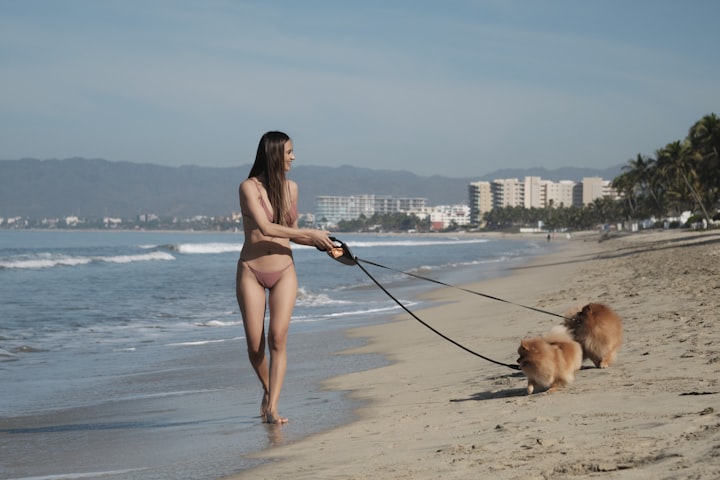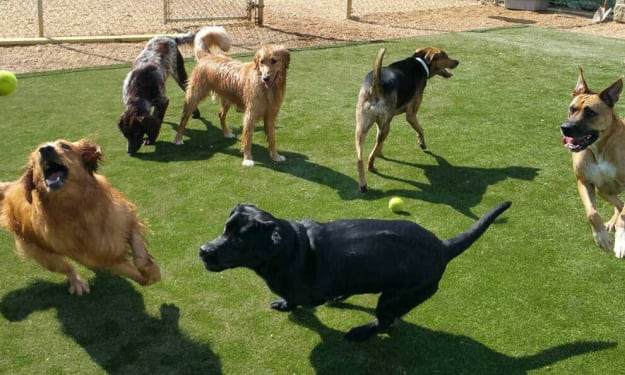Unraveling Why Dogs Respond Differently to Different People and Training Tips for Consistent Reactions on Walks
Nurturing Positive Encounters: Training Your Dog to Respond Calmly and Consistently to People During Walks

Have you ever wondered why dogs exhibit different reactions to different individuals? Dogs possess a keen ability to read human cues and respond accordingly, influenced by factors such as body language, scent, and previous experiences. In this article, we will explore why dogs respond differently to various people and provide tips and solutions for training your dog to respond consistently to different individuals encountered during walks.
I. Understanding the Factors Influencing Canine Reactions:
Body Language and Energy:
Dogs are highly perceptive of human body language and energy levels. They can sense tension, fear, or assertiveness, which can impact their responses. For example, a person displaying nervousness or fear may elicit a defensive or protective reaction from a dog, while someone exuding calmness and confidence may be met with a friendlier response.
Scent and Familiarity:
Dogs rely heavily on their sense of smell, and scents associated with different individuals can trigger varied responses. Dogs may react differently to people they are familiar with, those who have a similar scent to their owners, or individuals who possess unfamiliar or alarming scents.
Previous Experiences and Socialization:
A dog's past experiences and level of socialization play a significant role in their reactions. Positive encounters with a variety of people during the critical socialization period can foster a more accepting and relaxed response. On the other hand, negative experiences or a lack of exposure may lead to fear, aggression, or defensive behavior.
II. Training Tips for Consistent Reactions on Walks:
Desensitization and Counterconditioning:
Desensitization involves gradually exposing your dog to different individuals while maintaining a relaxed and controlled environment. Start by having a trusted person walk by at a distance where your dog remains calm, and reward your dog for calm behavior. Gradually decrease the distance over multiple sessions, ensuring that positive reinforcement and rewards are consistently provided.
Controlled Introductions:
When introducing your dog to new people, use controlled introductions to create positive associations. Have the person approach slowly and calmly, allowing your dog to sniff and investigate at their own pace. Reward your dog for relaxed and friendly behavior. Repeat this process with different individuals to reinforce positive responses.
Consistent Commands and Reinforcement:
Teach your dog basic obedience commands such as "sit," "stay," and "leave it." Practice these commands during walks and use them when encountering different people. By consistently reinforcing these commands, you can redirect your dog's attention and maintain control in potentially challenging situations.
Reward-Based Training:
Positive reinforcement is a powerful tool in training dogs to respond consistently to different people. When your dog exhibits the desired behavior, such as remaining calm or wagging their tail, immediately reward them with praise, treats, or toys. This positive association will help your dog associate encounters with different individuals as positive experiences.
Seek Professional Help if Needed:
If your dog consistently exhibits fearful, aggressive, or unpredictable behavior towards people during walks, consider seeking guidance from a professional dog trainer or behaviorist. They can provide personalized strategies and techniques to address your dog's specific needs and help you navigate challenging situations.
III. Examples of Training Scenarios:
Scenario: Barking at Strangers
Start by identifying a distance at which your dog remains calm but aware of the person walking by.
Use treats and positive reinforcement to reward your dog for staying calm and focused on you.
Gradually decrease the distance over multiple sessions, rewarding calm behavior at each stage.
Practice controlled introductions with friendly individuals, reinforcing positive responses.
Scenario: Growling or Aggression towards Certain individuals
Identify the triggers or characteristics that elicit a negative response from your dog (e.g., hats, sunglasses, deep voices).
Begin by exposing your dog to those triggers at a distance where they remain calm.
Use counterconditioning techniques, rewarding your dog for calm behavior and gradually decreasing the distance to the triggers over time.
Consider seeking professional help to address underlying fear or aggression issues and develop a tailored training plan.
Scenario: Overexcitement or Jumping on People
Teach your dog the "sit" command and practice it during walks.
When approaching people, ask them to ignore your dog until they are sitting calmly.
Reward your dog for sitting and reinforce the behavior consistently.
Gradually increase the level of distraction, such as having the person offer a treat when your dog is in a calm sitting position.
Conclusion:
Understanding why dogs respond differently to different people is essential in addressing their behavior during walks. Factors such as body language, scent, and previous experiences play significant roles in shaping their reactions. By implementing training techniques such as desensitization, controlled introductions, consistent commands, and positive reinforcement, you can help your dog respond more consistently and positively to different individuals encountered on walks.
Remember, training takes time and patience. Be consistent, reward desirable behavior, and seek professional help if needed. With dedication and proper training, you can create a more enjoyable and harmonious walking experience for both you and your dog, fostering a positive relationship with people they encounter along the way.
Learn more on how to care for your dog Click Here Now!
About the Creator
Big Dog Shopping
Big Dog Shopping was created with the needs of big dog parents in mind. We understand the challenges of finding products that are suitable for larger breeds. We featuring only the highest quality products.
Enjoyed the story? Support the Creator.
Subscribe for free to receive all their stories in your feed. You could also pledge your support or give them a one-off tip, letting them know you appreciate their work.





Comments
There are no comments for this story
Be the first to respond and start the conversation.